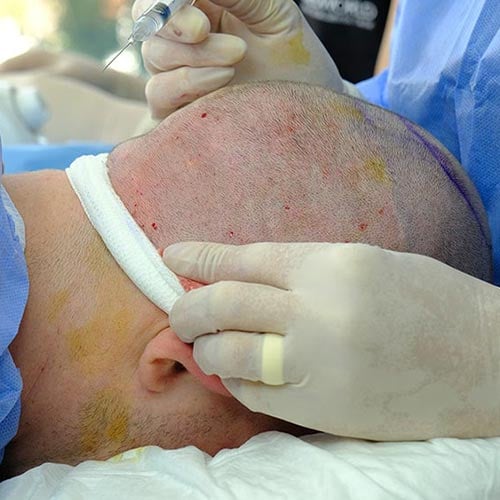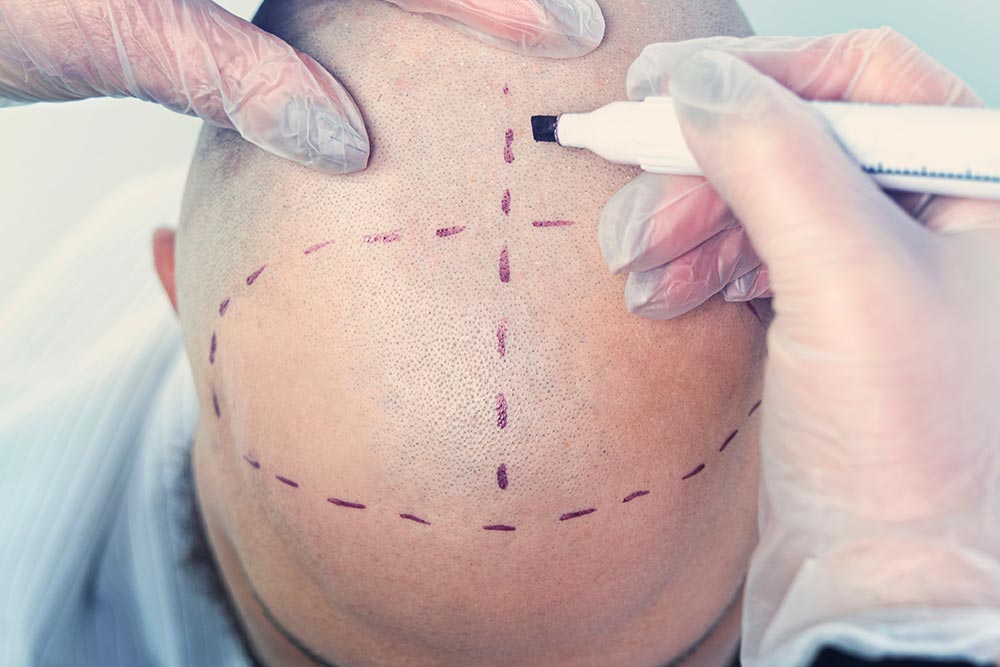Things to Consider After a Hair Transplant
Hair transplantation is an effective method that helps individuals experiencing hair loss achieve a natural and aesthetic appearance. However, the success of a hair transplant is not limited to the completion of the procedure alone. The post-operative period is equally important, as it ensures the hair follicles settle and the new hair grows in a healthy manner. Paying attention to post-transplant care protects the hair follicles from external factors and accelerates the healing process. Every precaution taken during this period directly contributes to the long-term success of the hair transplant.
Key considerations during the recovery period include protecting the scalp from sunlight, using appropriate hats, maintaining a proper diet, scalp care, and ensuring a consistent sleep routine. In this guide, we will cover these details to help you navigate the post-transplant period more easily.


İÇİNDEKİLER
Why Is Protecting Yourself from the Sun Important After a Hair Transplant?
Sunlight can pose a significant threat to the scalp, which is highly sensitive after a hair transplant. In particular, UV rays can cause burns, irritation, and infections on the scalp, making it harder for the hair follicles to settle. Unprotected exposure to sunlight can lead to dryness in the follicles and delay the healing process. Therefore, protecting yourself from the sun is one of the most critical steps during the recovery period after a hair transplant.

The Harms of Sun Exposure to the Scalp
The damage caused by sunlight to the scalp becomes more prominent, especially during the first weeks after a hair transplant. During this period, the scalp is highly vulnerable to external factors and irritation. UV rays cause the scalp to lose moisture and increase sensitivity. Additionally, oxidative stress caused by sun exposure can harm hair follicles and hinder hair growth.
Precautions to Protect Yourself from the Sun
To protect against the harmful effects of the sun, wide-brimmed hats or UV-protective accessories should be used. When selecting a hat, opt for soft, breathable materials that do not put pressure on the hair follicles. If necessary, doctor-recommended sunscreen lotions can also be applied.
How Long Should Sun Exposure Be Avoided?
The first two weeks after a hair transplant are a critical period when direct sun exposure must be avoided. During this time, the hair follicles have not yet fully settled and are highly sensitive to external factors. Throughout the first month, especially during peak midday sunlight hours, avoiding sun exposure is essential.
Is It Safe to Wear a Hat or Beanie After a Hair Transplant?
The use of hats or beanies is often a concern after a hair transplant. These accessories can be helpful in protecting hair follicles from sunlight and environmental factors. However, improper product selection or incorrect use may negatively affect the healing process.
The Effect of Hats and Beanies on Hair Follicles
Improperly worn hats or beanies can put pressure on the hair follicles, causing irritation in the transplanted area. Additionally, non-breathable materials can prevent the scalp from getting sufficient air, delaying the healing process.
How to Choose the Right Hat?
Selecting the right hat contributes to the healing process. Soft-textured, loose-fitting, and breathable hats should be preferred. Avoid tight and stiff-edged hats to prevent unnecessary pressure on the scalp.
When Is It Safe to Wear a Hat or Beanie?
Wearing a hat or beanie can typically begin after the first week following a hair transplant. However, it is essential to follow your doctor’s recommendations during this period. Care must be taken to ensure that hats do not place any pressure on the hair follicles.
How to Accelerate the Healing Process After a Hair Transplant?
Certain precautions taken during the post-transplant period can speed up the healing process and help achieve healthier results. During this phase, it is necessary to allow the scalp to rest and apply appropriate care methods.
The Importance of Rest After a Hair Transplant
Providing the body with the rest it needs after the procedure helps the hair follicles attach more securely. Heavy physical activities should be avoided during the first few days, and sufficient rest should be prioritized.
The Effect of Regular Check-Ups on Recovery
Doctor check-ups allow for careful monitoring of the healing process. Following the treatment plans recommended by your doctor during these visits helps prevent potential complications.
Proper Scalp Care Practices
Using the correct care products supports the healing process. Lotions and shampoos that help maintain the scalp’s moisture balance should be preferred. Additionally, practices that could damage the scalp must be avoided.
Consult Now!
Fill out the form to get detailed information about the hair
transplant process and personalized solutions tailored for you!
Nutrition After Hair Transplant
Nutrition is one of the key pillars of the recovery process after a hair transplant. Providing hair follicles with essential vitamins, minerals, and other nutrients strengthens newly transplanted hair and promotes healthy growth. Since hair follicles are in a sensitive state following the procedure, a lack of proper nutrition can prolong the attachment process or hinder their development. Therefore, revising your eating habits and incorporating foods beneficial for hair health is essential.
Beneficial Foods to Consume
Protein-rich foods are vital for strengthening the structure of hair follicles. For example, eggs help thicken hair strands due to their biotin content, while omega-3 fatty acid-rich fish such as salmon, sardines, and tuna help maintain the scalp’s moisture balance and accelerate recovery. Foods rich in iron, zinc, and magnesium also have a direct impact on hair health. Particularly walnuts, almonds, avocados, and broccoli support the development of hair follicles with their combination of vitamins and healthy fats.
Foods to Avoid
During the post-transplant period, processed foods, high-sugar items, and overly salty meals should be avoided. These foods can increase inflammation, which may harm hair follicle development. Additionally, fast food, carbonated drinks, and fried foods can slow down the recovery process and negatively impact the success of the hair transplant. It is essential to focus on natural and healthy nutrition during the healing phase.
Are Vitamin and Mineral Supplements Recommended?
To support nutrition after a hair transplant, you may use supplements recommended by your doctor. Biotin is one of the most effective vitamins for promoting hair growth and strengthening follicles. Zinc, vitamin D, and iron supplements also improve blood circulation in the scalp, helping the follicles attach more quickly. However, these supplements must be taken under medical supervision, as unnecessary use can disrupt the body’s natural balance and lead to unwanted outcomes.
How to Manage Itching and Crusting After a Hair Transplant?
Itching and crusting after a hair transplant are natural parts of the healing process. However, if not managed properly, these conditions may damage the hair follicles. Itching is usually a sign that the healing process has begun, while crusting in the transplanted area indicates that new hair follicles are undergoing recovery. Incorrect interventions during this phase can harm the follicles and increase the risk of infection.
Steps to Control Itching
Safe and Quick Removal of Crusting
During the crusting phase, it is essential to allow the crusts to shed naturally. Attempting to remove the crusts manually can negatively impact the attachment process of the follicles and cause wounds on the scalp. By following your doctor’s recommended washing routine, the crusts can be removed more safely and efficiently. For instance, gentle massaging motions with special shampoos can help accelerate this process.
Precautions During the Itching and Crusting Phase
Special attention should be given to scalp hygiene during this period. To protect the transplanted area, avoid touching it with unclean hands. During washing, lukewarm water should be used instead of hot water, and massage motions must be gentle. Furthermore, chemical products that may irritate the scalp should be avoided, and only products recommended by your doctor should be used.
Why Is Sleeping Position Important After a Hair Transplant?
The sleeping position is vital for protecting the sensitive hair follicles and supporting the healing process after a hair transplant. An incorrect sleeping position can put pressure on the follicles, potentially dislodging them. Sleeping carefully in the initial days will prevent damage to the transplanted area.
Which Sleeping Positions Should Be Preferred?
During the first week after a hair transplant, sleeping on your back is recommended. This position minimizes pressure on the hair follicles and helps them settle securely. Side or face-down sleeping positions can harm the transplanted area and delay the healing process. Additionally, using pillow support for the head is essential.
Pillow Usage to Protect Hair Follicles
Neck-support pillows can be used to protect the hair follicles. These pillows limit head movement, preventing damage to the follicles. Ensuring that pillowcases are clean and hygienic minimizes the risk of infection. Soft-textured pillowcases also help prevent scalp irritation.
Things to Consider During Sleep in the First Days
Extra care should be taken with the head area during the first few days. Avoid bumping the head or movements that could harm the follicles while sleeping. Additionally, the sleeping surface must be clean and sterile. Paying attention to the hygiene of all sleep-related equipment reduces infection risks and supports the healing process.
Consult Now!
Fill out the form to get detailed information about the hair
transplant process and personalized solutions tailored for you!

